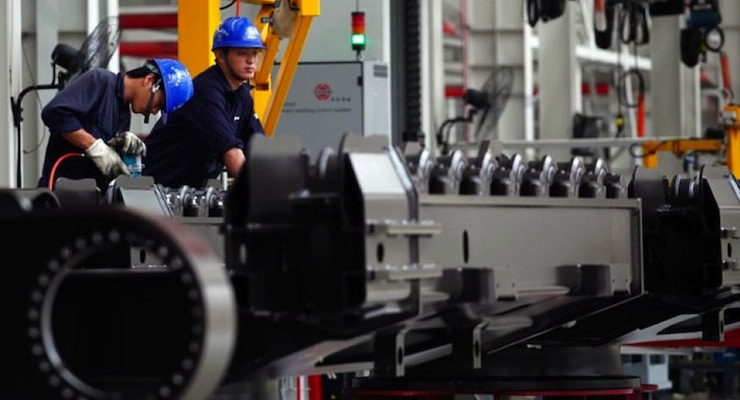
American workers at a manufacturing plant for long-lasting durable goods. (PHOTO: REUTERS)
Orders for U.S. durable goods unexpectedly rose last month largely thanks to a surge in military spending, but underlying data suggest broad weakness in business investment.
The Commerce Department said Wednesday orders for durable goods, which are products designed to last at least three years, rose by a seasonally adjusted 0.4 percent in October on a year-over-year basis. The gains slightly offset a 0.9 percent drop in September, but one sector carrying the measure is underlying weakness in the long-term.
Economists surveyed by The Wall Street Journal had expected overall orders to fall 0.5 percent, but the ramping up of defense contracts reversed expectations. The rise was almost entirely reflective of a 45.3 percent surge in demand for defense aircraft and parts, which is masking weak demand for other goods.
Excluding transportation orders fell 0.9 percent, which was the biggest drop since December of 2013. When excluding defense-related products, orders actually fell 0.6 percent.
Orders for non-defense capital goods excluding aircraft — a measurement of business spending on equipment and software, for instance — dropped 1.3 percent in October after falling by the same rate in September. Meanwhile, orders for machinery, computer products, fabricated metal products and primary metals all fell last month.
While so far this year orders for durable goods have gained 7.5 percent from levels in 2013, and orders for non-defense capital goods excluding aircraft have climbed 5.4%, the latest monthly data also suggest the economy may be cooling from its level of growth in the spring and summer.
The U.S. economy grew at an annualized pace of 3.9% in July through September, concluding a six-month stretch that marked the strongest growth in more than a decade, the government reported this week. Many economists expect economic growth to slow to between 2 percent and 3 percent in the fourth quarter, and Wednesday’s report will certainly reaffirm those expectations.



